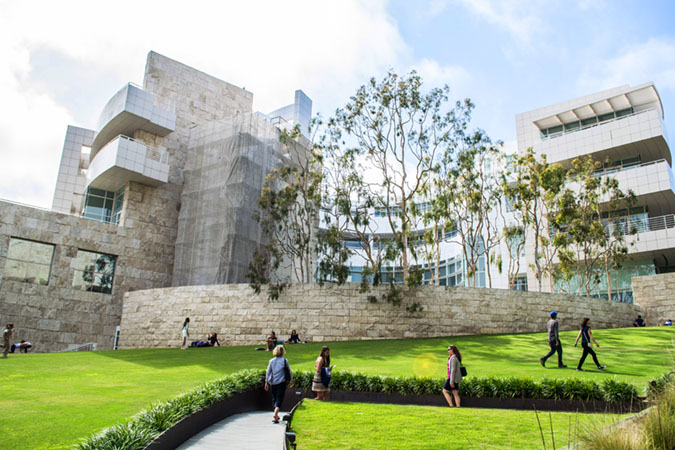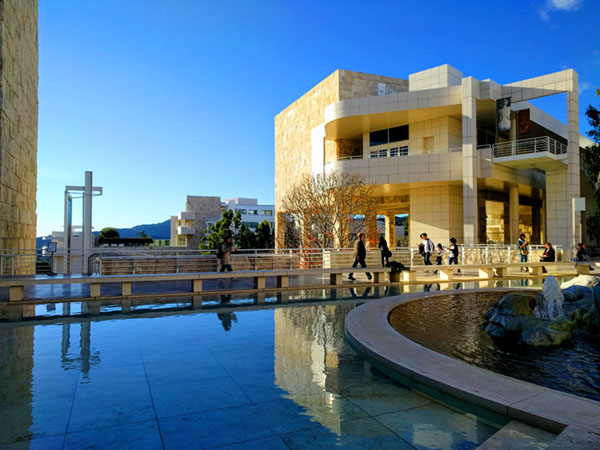Getty Center
The collection, changing exhibitions, and outdoor art on view at the Getty Center reach across European and American history—from medieval times to the present.
Permanent Collection
The collection of the J. Paul Getty Museum at the Getty Center includes pre-20th-century European paintings, drawings, illuminated manuscripts, sculpture, and decorative arts; 19th- and 20th-century American, European, and Asian photographs; contemporary and modern sculpture; and Robert Irwin’s Central Garden, designed specifically for the Getty Center.
Paintings, Sculpture, and Decorative Arts
Always on view, the Museum’s collection of European paintings, sculpture, and decorative arts is arranged roughly by era and the artist’s nationality in galleries that span four pavilions at the Getty Center.
The North Pavilion presents paintings dating up to 1600, as well as medieval and Renaissance sculpture and decorative arts.
The East Pavilion features primarily 17th-century Baroque art, including Dutch, French, Flemish, and Spanish paintings, as well as sculpture and Italian decorative arts dating from 1600 to 1800.
The South Pavilion houses 18th-century paintings and the majority of the Museum’s European decorative arts collection, complete with elaborately furnished paneled rooms, dating up to 1800.
The West Pavilion features sculpture and Italian decorative arts of the 1700s through 1900, as well as 19th-century paintings. Neoclassical, Romantic, and Symbolist sculpture and decorative arts are also on view.
Outdoor Sculpture
Contemporary and modern sculpture is featured throughout the grounds, including 28 modern and contemporary outdoor sculptures installed at the Getty Center, donated by Fran and Ray Stark.
Martin Puryear’s site-specific sculpture That Profile (1999), commissioned by the Getty, is located on the Tram Arrival Plaza. The Getty Center also features artist Robert Irwin’s Central Garden, designed specifically for the Getty Center. See Gardens for more information.
Photographs, Manuscripts, and Drawings Exhibitions
These light-sensitive artworks cannot be on permanent display. Changing exhibitions allow the Museum to rotate the works, and to provide new ways of looking at and interpreting them. Drawings exhibitions are featured in the West Pavilion, manuscripts in the North Pavilion, and photographs in the 7,000-square-foot Center for Photographs in the West Pavilion.
Photographs Research
Researchers interested in the Museum’s collection of photographs can also consult the Photographs Study Room at the Getty Center, which is open by prior appointment.
Getty Research Institute Exhibitions
The Getty Research Institute offers changing exhibitions of rare books, manuscripts, photographs, artists’ notebooks, and other materials from the special collections of the Research Library related to the history of art and architecture. The gallery, located in the Research Institute building, is open the same hours as the Museum. To schedule a group tour of Research Institute exhibitions, please e-mail GRIconnect@getty.edu.
Premiere Exhibitions
The Exhibitions Pavilion hosts seasonal Premiere Presentations and other major exhibitions, which often involve collaboration with and loans from museums around the world, and are among the most important exhibitions of the year.
Source: Getty Center






